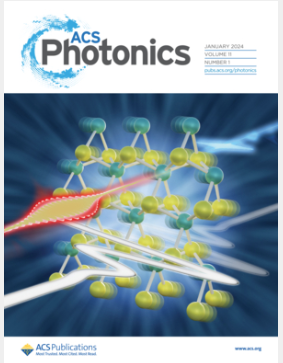Resonance Fluorescence from a Single Quantum Dot in a Nanopost Optical Cavity
IF 6.7
1区 物理与天体物理
Q1 MATERIALS SCIENCE, MULTIDISCIPLINARY
引用次数: 0
Abstract
Scaling-up photonic quantum technologies will require the parallel operation of on-demand sources of identical single photons. In this context, broadband photonic structures embedding a single quantum dot (QD) are particularly appealing, as optimal source performance can be maintained upon QD spectral tuning. The nanopost─a nanocavity built with a segment of photonic wire─offers a broadband Purcell effect and a directive output beam. So far, however, QD-nanopost devices were only characterized using nonresonant optical excitation. Here, we employ a continuous wave laser to resonantly drive a single QD in a nanopost and detect its resonance fluorescence. Even though the nanopost introduces a significant optical roughness at the scale of the focused laser spot, a cross-polarization scheme leads to an excellent rejection of the excitation laser. We extensively characterize the QD optical emission by combining linescans and intensity correlation measurements, which are jointly analyzed with an analytical model. The emission features a pronounced antibunching (g(2)(0) = 0.02), close to the one of an ideal two-level system. For small driving powers, the homogeneous (total) spectral linewidth is a factor of 1.4 (5) above the Fourier limit. Combined with future device improvements, these results mark an important step toward the realization of bright and widely tunable sources of indistinguishable single photons.

纳米柱光学腔中单量子点的共振荧光
扩大光子量子技术将需要对相同单光子的按需源进行并行操作。在这种情况下,嵌入单个量子点(QD)的宽带光子结构特别有吸引力,因为在量子点光谱调谐的情况下可以保持最佳的源性能。纳米柱──由一段光子线构成的纳米腔──提供宽带珀塞尔效应和定向输出光束。然而,到目前为止,量子点纳米柱器件仅使用非共振光激发来表征。在这里,我们使用连续波激光共振驱动纳米柱中的单个量子点并检测其共振荧光。尽管纳米柱在聚焦激光光斑的尺度上引入了显著的光学粗糙度,但交叉极化方案可以很好地抑制激发激光。我们通过结合线扫描和强度相关测量对量子点光发射进行了广泛的表征,并与分析模型进行了联合分析。发射具有明显的反聚束特性(g(2)(0) = 0.02),接近理想的双能级系统。对于较小的驱动功率,均匀(总)谱线宽度比傅里叶极限高1.4(5)倍。结合未来设备的改进,这些结果标志着朝着实现难以区分的单光子的明亮和广泛可调光源迈出了重要的一步。
本文章由计算机程序翻译,如有差异,请以英文原文为准。
求助全文
约1分钟内获得全文
求助全文
来源期刊

ACS Photonics
NANOSCIENCE & NANOTECHNOLOGY-MATERIALS SCIENCE, MULTIDISCIPLINARY
CiteScore
11.90
自引率
5.70%
发文量
438
审稿时长
2.3 months
期刊介绍:
Published as soon as accepted and summarized in monthly issues, ACS Photonics will publish Research Articles, Letters, Perspectives, and Reviews, to encompass the full scope of published research in this field.
 求助内容:
求助内容: 应助结果提醒方式:
应助结果提醒方式:


